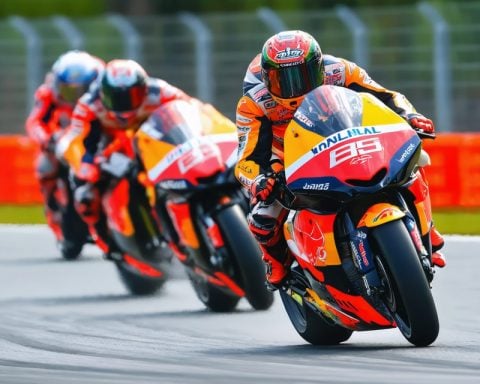The automotive landscape is about to revolutionize. Japanese manufacturers Honda and Nissan are set to join forces, aiming to establish the world’s third-largest automotive conglomerate by 2026. This strategic merger comes as Japanese automakers face fierce competition from the rapidly expanding Chinese electric vehicle sector.
Under the proposed arrangement, Honda is expected to spearhead the new holding company, which plans to go public by August 2026. This integration encompasses Japan’s second and third-largest car brands, creating a formidable partnership in a market increasingly influenced by innovative electric vehicle technologies.
The financial dynamics are noteworthy. Honda boasts a market capitalization exceeding $40 billion, significantly overshadowing Nissan’s value, which stands at roughly a quarter of Honda’s. This disparity sets the stage for Honda to take a leadership role in the collaborative effort, offering an invaluable opportunity to bolster both brands in a competitive industry.
As the partnership unfolds, experts will be closely watching how the merger affects the companies’ market positions and their ability to innovate in a rapidly changing automotive environment. The union symbolizes a proactive approach by Japanese manufacturers to secure their future against the tide of emerging global competitors.
Honda and Nissan’s Merger: A Game Changer for the Automotive Industry
The Future of Automotive Collaboration
The automotive landscape is witnessing a monumental shift as Honda and Nissan prepare to merge, striving to create the world’s third-largest automotive conglomerate by 2026. This merger is crucial as Japanese automakers grapple with fierce competition from the burgeoning Chinese electric vehicle (EV) market, which has rapidly changed the dynamics of the industry.
Details of the Merger
As part of the merger, Honda is set to lead the new holding company, which plans to go public by August 2026. This strategic alliance consolidates Japan’s second and third-largest car manufacturers, paving the way for a formidable presence in a sector dominated by electric and autonomous vehicle innovations.
Financial Insights
The financial implications of this merger are significant. Honda’s market capitalization exceeds $40 billion, which provides a robust foundation for the new entity, especially given Nissan’s valuation of approximately $10 billion. This solid financial backing allows Honda to leverage its resources and experience in automotive technology and innovation to enhance both brands.
What to Expect: Innovations and Sustainability
The merging of Honda and Nissan signifies not just a financial partnership, but also a commitment to innovation and sustainability. The automotive industry is under pressure to transition towards greener practices, and both companies have been investing heavily in research and development of electric vehicles. Industry analysts predict that this merger could accelerate advancements in EV technology, increasing both companies’ ability to compete against global rivals like Tesla and Chinese manufacturers.
Market Trends and Predictions
The merger aligns with broader trends in the automotive sector where collaboration is becoming essential for survival. With the rise of electric and autonomous vehicles, many manufacturers are seeking partnerships to share technology costs and speed up product development. It is predicted that by 2030, more than 50% of global car sales will be electric, making this strategic move by Honda and Nissan timely.
Pros and Cons of the Merger
Pros:
– Strength in Numbers: A merger can increase market share and competitiveness against global giants.
– Resource Sharing: Combining R&D efforts can accelerate innovation in electric vehicles and sustainable technologies.
– Financial Stability: Stronger financial standing can lead to better investment opportunities.
Cons:
– Integration Challenges: Merging corporate cultures and processes can be complicated and may face resistance.
– Market Reaction: Investor response to the merger may vary, with potential short-term volatility in stock prices.
– Regulatory Scrutiny: Large mergers could attract regulatory challenges both domestically and internationally.
Conclusion
The Honda and Nissan merger represents a strategic pivot for Japanese automakers as they navigate an increasingly competitive global market characterized by rapid technological advancements and changing consumer preferences. Observers will be keenly monitoring this partnership’s progress, particularly its ability to innovate and capture market share against powerful competitors.
For more insights into automotive trends and innovations, visit automotive.com.













